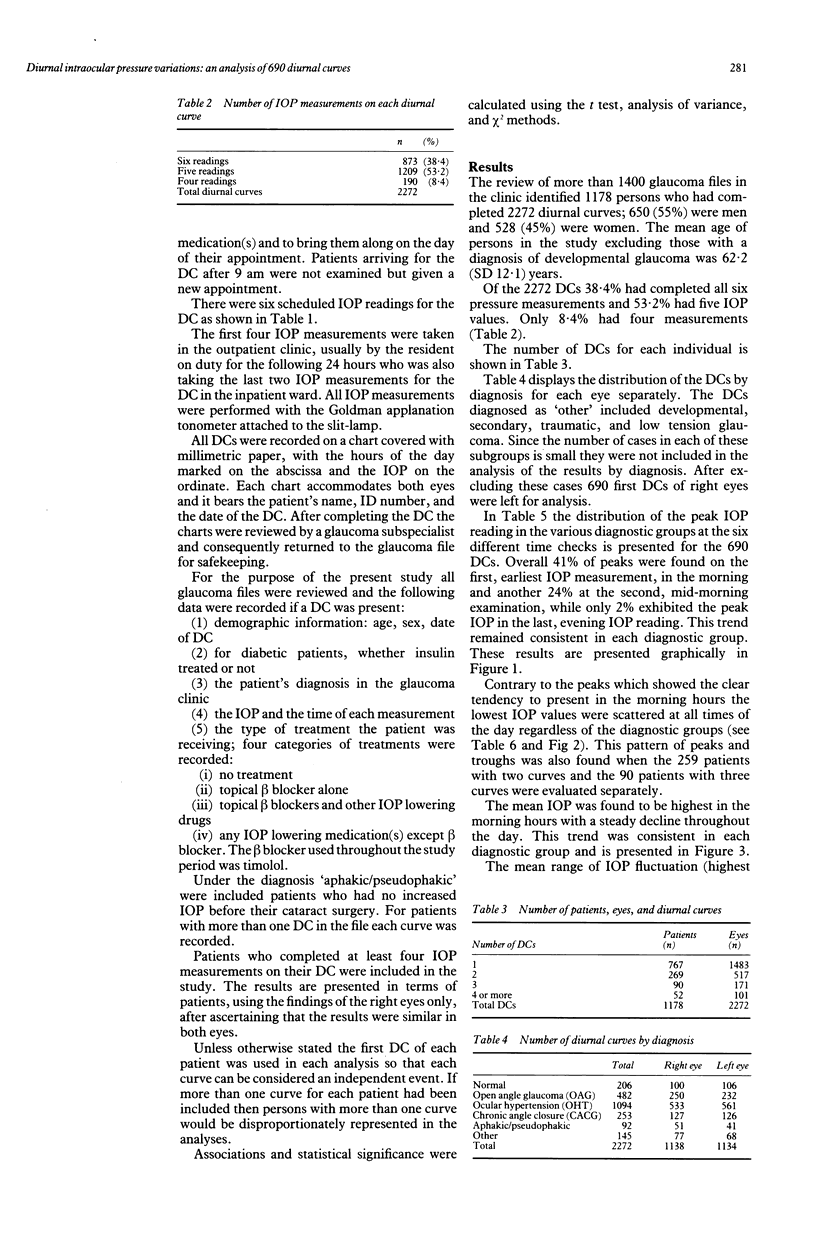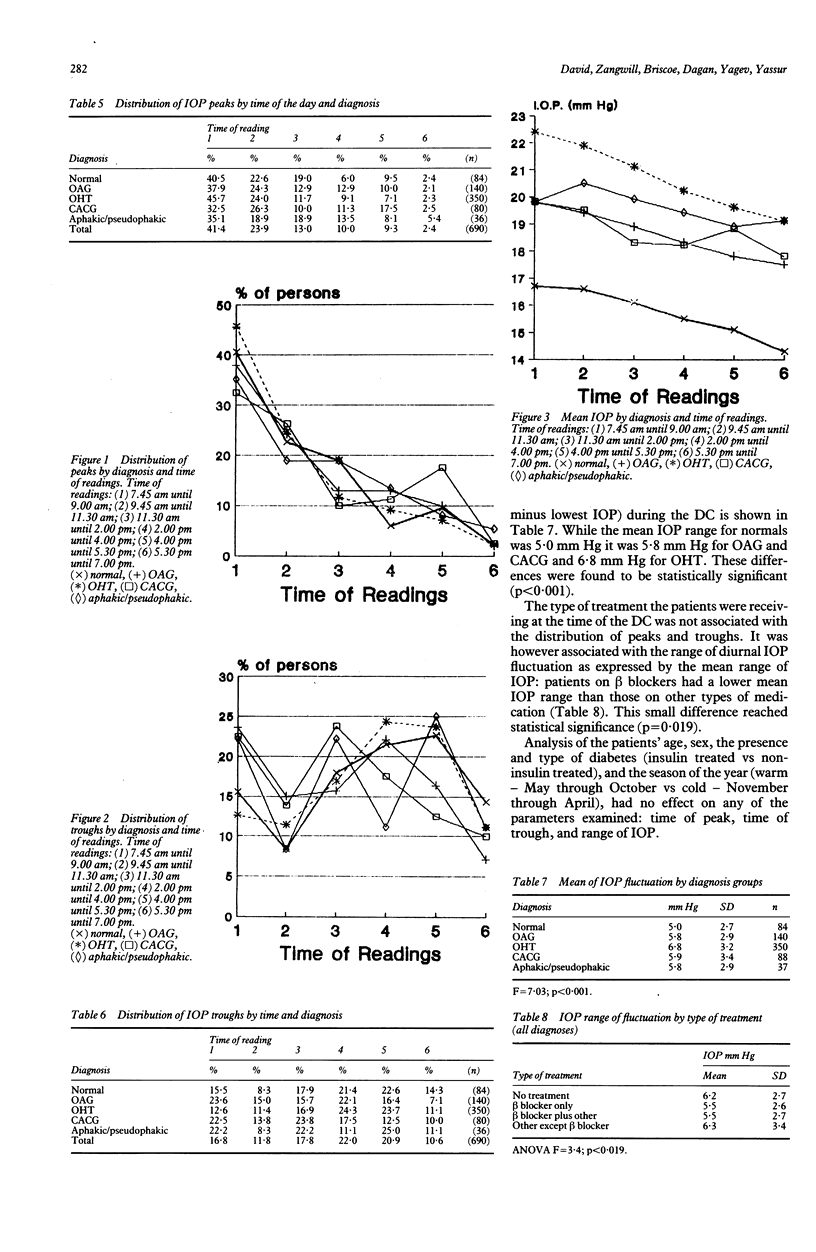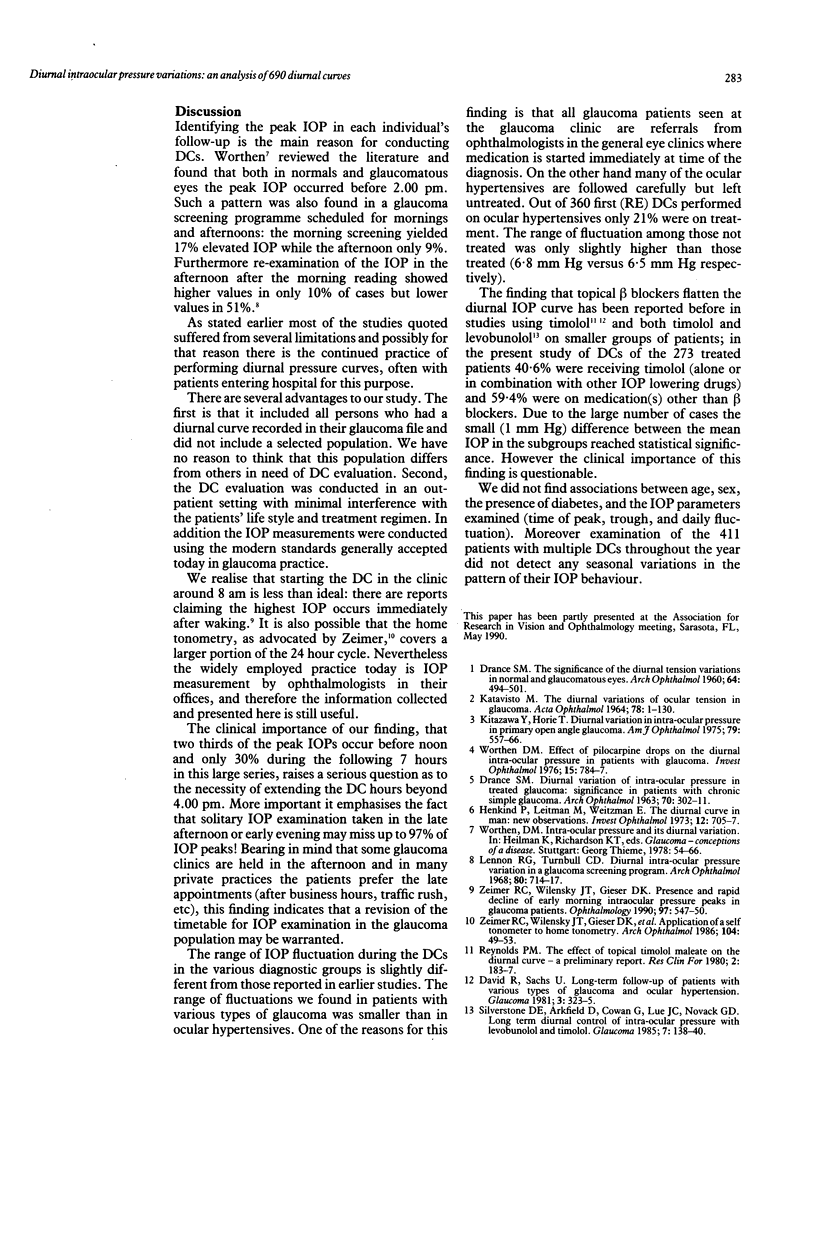Abstract
Out of a total of 2272 diurnal curves (DC) of intraocular pressure (IOP) obtained from 1178 patients 690 first curves of the right eye of all patients were analysed. For each DC there were 4-6 IOP readings taken between 8 am and 6.30 pm of the same day. The patients' diagnosis, age, sex, type of IOP lowering medication, diabetes, and the calendar month of the year were recorded. In 40% of cases the highest IOP was found at the earliest morning measurement with some 65% of peaks occurring before noon. The lowest IOP measurement showed no specific predilection for any particular time of the day. These findings were true for all diagnosis groups. The mean range of IOP fluctuation during the DC was 5.0 mm Hg in normals, 5.8 mm Hg in patients with open angle glaucoma (OAG), and 6.8 mm Hg in patients with ocular hypertension (OHT). Patients treated with timolol had a lower mean IOP fluctuation range than those on other types of IOP lowering treatment. No association was found between all other parameters examined and the diurnal IOP distribution.
Full text
PDF



Selected References
These references are in PubMed. This may not be the complete list of references from this article.
- DRANCE S. M. DIURNAL VARIATION OF INTRAOCULAR PRESSURE IN TREATED GLAUCOMA. SIGNIFICANCE IN PATIENTS WITH CHRONIC SIMPLE GLAUCOMA. Arch Ophthalmol. 1963 Sep;70:302–311. doi: 10.1001/archopht.1963.00960050304004. [DOI] [PubMed] [Google Scholar]
- DRANCE S. M. The significance of the diurnal tension variations in normal and glaucomatous eyes. Arch Ophthalmol. 1960 Oct;64:494–501. doi: 10.1001/archopht.1960.01840010496004. [DOI] [PubMed] [Google Scholar]
- Henkind P., Leitman M., Weitzman E. The diurnal curve in man: new observations. Invest Ophthalmol. 1973 Sep;12(9):705–707. [PubMed] [Google Scholar]
- Kitazawa Y., Horie T. Diurnal variation of intraocular pressure in primary open-angle glaucoma. Am J Ophthalmol. 1975 Apr;79(4):557–566. doi: 10.1016/0002-9394(75)90792-8. [DOI] [PubMed] [Google Scholar]
- Lennon R. G., Turnbull C. D. Diurnal intraocular pressure variation in a glaucoma screening program. Arch Ophthalmol. 1968 Dec;80(6):714–717. doi: 10.1001/archopht.1968.00980050716006. [DOI] [PubMed] [Google Scholar]
- Worthen D. M. Effect of pilocarpine drops on the diurnal intraocular pressure variation in patients with glaucoma. Invest Ophthalmol. 1976 Sep;15(9):784–787. [PubMed] [Google Scholar]
- Zeimer R. C., Wilensky J. T., Gieser D. K. Presence and rapid decline of early morning intraocular pressure peaks in glaucoma patients. Ophthalmology. 1990 May;97(5):547–550. doi: 10.1016/s0161-6420(90)32543-5. [DOI] [PubMed] [Google Scholar]
- Zeimer R. C., Wilensky J. T., Gieser D. K., Welch D. B., Mori M. T., Kahanic D. Application of a self-tonometer to home tonometry. Arch Ophthalmol. 1986 Jan;104(1):49–53. doi: 10.1001/archopht.1986.01050130059020. [DOI] [PubMed] [Google Scholar]


